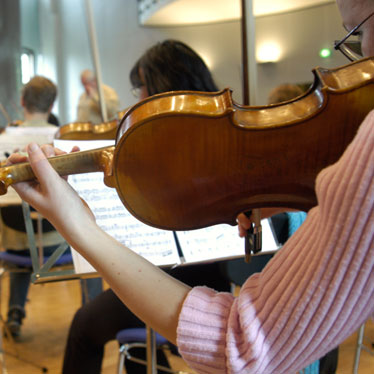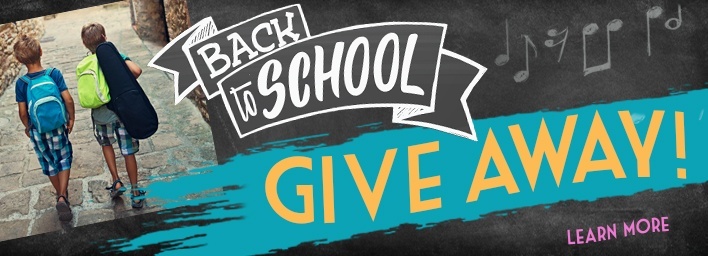Teacher’s Corner: 4 Strategies For Integrating New Students Into Your Orchestra

School orchestras are often a tight-knit bunch. This is great for those on the inside of the bunch, but can be daunting for new members. Using successful strategies to integrate new students into the orchestra culture will create a more cohesive feel for your program, and it goes a long way towards making the orchestra's new arrivals feel more comfortable, accepted, and confident in their school experience at-large.
The following strategies provide a welcome and open-armed foundation that encourages ease, trust, and peace of mind for all of your students – both the newest members as well as existing members who are interested in getting to know the new member(s) but feel shy or uncomfortable about reaching out without a little supportive guidance on your end.
1. Prepare existing choir members ahead of time
Ideally, you're going to get a heads-up before a new student shows up in class. Similarly, if orchestra membership is dependent on successful auditions, you'll be the first to know about the new arrival. Prepare your orchestra members ahead of time for a smoother transition.
This is a great time to review how important it is to be open and curious about new students, encouraging empathy to his/her plight. Spend some time discussing what it would feel like to be a new student and encourage students who've been the "new kid" to share what it was like for them. The more you can get the group to see how challenging it is (feeling nervous, scared, embarrassed, anxious, confused, not to mention the sadness that comes along with missing old family/friends) will help them open hearts and minds to the new member.
2. Create “Getting to Know You” cards from the get-go
This strategy is a good one to implement at the beginning of the school year, after which each student takes turns sharing the information on their card. Then, when new students arrive, their "sharing of the card" blends right into the class culture. These cards are also instrumental in helping you gain a more clear, detailed, and well-rounded perspective on all of your students.
Pass out index cards and have the students fill out their name, contact information and birthdate. Then, ask them a series of questions (5 to 8 is ideal) that cover details you might not learn via the day-to-day orchestra routine.
Examples of fun questions include:
- What is your favorite movie?
- If you didn't play the instrument you do now, which instrument would you play?
- If you could travel anywhere in the world - where and why?
- Who is your favorite person from history?
- Who is your favorite person in the present?
- What is something we don't know about you that would surprise us?
- Do you have another talent or hobby?
- If you could wake up and be proficient at a talent, what would it be?
- Which 3 foods would you have to have if you were stranded on a desert island?
- What's something you like about yourself or are proud of? What's something you wish was different about yourself?
You'll be surprised at how much you and the students learn about each other. When a new student comes, they get to fill out a card and share it as well - and you can give them the existing cards to read through so they can learn about their fellow orchestra members. For new students, include a question specific to their music experience where they came from – what their orchestra was like, the types of music they played, etc.
3. Assign them to a “buddy” or ensemble
Do you have a few students who excel at being helpful, encouraging, and kind? See if they're willing to be the new student's Buddy or Representative. In addition to supporting new students as they familiarize themselves with the orchestra and its routines, Buddies also keep a watchful eye out within the general school population – answering questions or providing assistance as needed.
Another idea is to assign the new student to an ensemble group and perhaps incorporate some ensemble and/or improvisational time into your curriculum over the following weeks, so the students have time to get to know one another a bit better.
4. Host mid-semester social time
It's good for any group to spend some fun time together once in a while, time that has nothing to do with the typical practice, class or rehearsals. Consider hosting mid-semester (or even quarterly) social events that allow students to get to know one another better. Examples include:
- Pizza and movie nights
- Talent shows (no string instruments allowed)
- Game nights
- Volunteer opportunities in the community
- Field trip(s) to somewhere age appropriate and interesting – seasonal events are often the best (corn mazes, haunted houses, cookie or gingerbread house decorating, arbor day tree planting)
These social opportunities afford new students a chance to mingle more with their classmates and forge new or deeper bonds.
Subscribe to StringOvation's Music Blog to glean more tips and ideas geared towards music educators and their classrooms.


